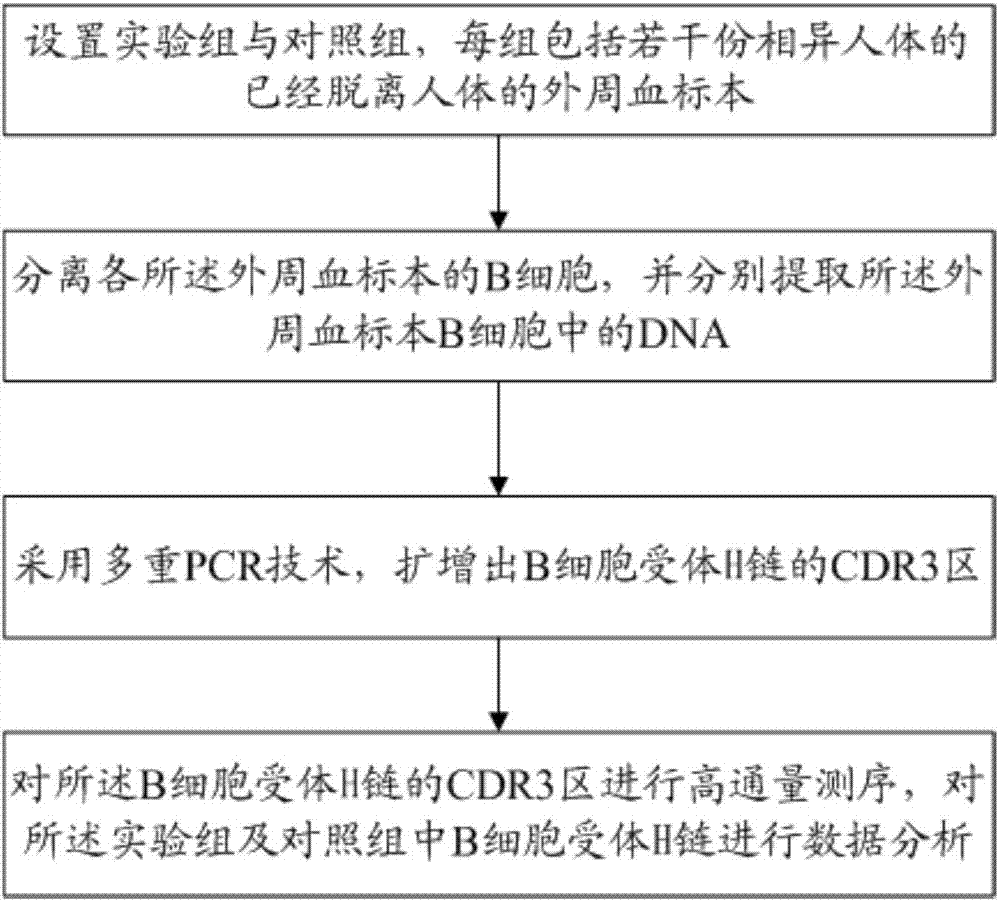Method for treating complementary determining regions 3 (CDRs3) of B cell antigen receptor H chains
A treatment method, B cell technology, applied in the direction of biochemical equipment and methods, microbial measurement/inspection, etc., can solve the problems of reform of treatment methods, failure to fully clarify the immune mechanism of ESRD, etc., and achieve the effect of deepening understanding
- Summary
- Abstract
- Description
- Claims
- Application Information
AI Technical Summary
Problems solved by technology
Method used
Image
Examples
Embodiment Construction
[0027] In order to make the above objects, features and advantages of the present invention more comprehensible, specific implementations of the present invention will be described in detail below in conjunction with the accompanying drawings. In the following description, numerous specific details are set forth in order to provide a thorough understanding of the present invention. However, the present invention can be implemented in many other ways different from those described here, and those skilled in the art can make similar improvements without departing from the connotation of the present invention, so the present invention is not limited by the specific embodiments disclosed below.
[0028] see figure 1 , an embodiment of the present invention is a method for processing B cell antigen receptor H chain CDR3, which includes the following steps.
[0029] S110, setting up an experimental group and a control group, each group including several peripheral blood samples fro...
PUM
 Login to View More
Login to View More Abstract
Description
Claims
Application Information
 Login to View More
Login to View More - R&D
- Intellectual Property
- Life Sciences
- Materials
- Tech Scout
- Unparalleled Data Quality
- Higher Quality Content
- 60% Fewer Hallucinations
Browse by: Latest US Patents, China's latest patents, Technical Efficacy Thesaurus, Application Domain, Technology Topic, Popular Technical Reports.
© 2025 PatSnap. All rights reserved.Legal|Privacy policy|Modern Slavery Act Transparency Statement|Sitemap|About US| Contact US: help@patsnap.com

